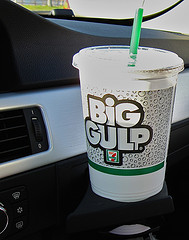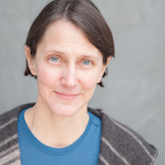New York Soda Regulations: a Big Gulp to Swallow
- Jan 19, 2013 | Gail Cole

Update, 6.26.14: At the final hour, the ban on large sodas was banned. It has been in court ever since. Now it has been announced that the New York Court of Appeals has refused to reinstate New York City's ban on super sized sodas.
Update 3.11.13: In spite of lingering protest, Mayor Bloomberg’s ban on soda drinks larger than 16 ounces is scheduled to take effect tomorrow, March 12. NYC Soda Tax Is a Go.
Unless the nation's soda industry stages a coup (or at least gets a court-order), New York Mayor Bloomberg's ban on super-sized soda and sugary drinks will take effect in New York City on March 12, 2013. From that day forward, it will no longer be possible to purchase sugary drinks in containers larger than 16-ounces in restaurants, sports arenas, movie theaters and mobile food carts.
The mayor's goal? Help save New Yorkers from their own appetites and slash the city's rates of obesity and diabetes. His opponents? The sugary drink industry and people like the group New Yorkers for Beverage Choice, who "believe New York City residents and visitors should have the right to buy beverages in any size they choose."
In truth, the ban will be little more than an inconvenience. You'll still be able to drink as much soda as you want, you just won't be able to consume 32 ounces of soda out of one cup. Unless, of course, you enjoy unlimited refills. Or shop at convenience stores.
It turns out that Bloomberg's ban targets the businesses listed above but exempts other businesses. Convenience stores and grocery stores will be free to sell all sizes of soda and sugary drinks.
7-Eleven and the Exempt Big Gulp
7-Eleven is determined to take over Manhattan, where corners have long been dominated by quirky bodegas; there are currently fewer than twenty-five 7-Elevens in New York City, and more than 16,000 bodegas. 7-Eleven plans to open 100 stores / franchises on the island by 2017 because, according to a senior vice president of development, there is "an opportunity in Manhattan -- huge traffic counts, huge pedestrian traffic [and] the need for convenience." (nymag.com).
It's hard to imagine 7-Eleven's expansion will not be helped by the fact that it can sell super-sized sugary drinks, like the 1.2 Liter Super Big Gulp. Then there's the Slurpee. Slurpees "have 'unbelievable' sales numbers in Manhattan," says one 7-Eleven field Consultant, and all Slurpee sizes will be up for sale on March 13.
What would 7-Eleven be without its iconic Big Gulp or Slurpee? Just another store on the corner.
Bloomberg's Battle for Healthy Habits
This is not the first step the Mayor Bloomberg has taken to improve the health of New Yorkers. During his tenure, he has outlawed smoking in restaurants, bars, and workplaces. He has banned trans fat from restaurants, and required chain restaurants such as McDonalds to post calorie counts. Mayor Bloomberg hopes his soda ban will also help New York citizens become healthier -- less obese and less diabetic.
Maybe a little inconvenience is enough to change habits. Maybe if folks stop regularly consuming giant sugary drinks, they'll be less inclined to ever purchase them. Or maybe the calories burned by multiple trips to the food cart will help offset the calories consumed.
A Soda Tax
Some have argued that a soda tax would be more effective than Bloomberg's soda ban. After all, increasing the tax on cigarettes has been shown to reduce the demand for cigarettes.
A soda tax was considered by President Obama, the Senate and the House during early discussions about health care reform. Projections indicated that a one-cent tax on non-diet soft drinks could generate $1.5 billion a year, and a one cent per ounce tax could generate $16 billion annually -- money that could go toward health care. Yet the idea was met with resistance; it rallied lobbyists, sparked the creation of Americans Against Food Taxes, and was ultimately rejected for lack of votes.
In response, "a White House task force on childhood obesity invited the states to … experiment with taxing sugar-sweetened beverages as a way to reduce consumption." Some states were already trying to do just that. In 2009, New York Governor David Paterson suggested a soda tax but dropped the idea because of "strong opposition." In 2010, prior to suggesting his ban on super-sized sugary drinks, Mayor Bloomberg proposed a soda tax. He argued that "the soda tax is a fix that just makes sense. It would save lives. It would cut rising health costs." (The New York Times).
And although two California cities tried and failed to pass soda taxes last fall, 33 states have "state-level soda taxes… ."
"The soda industry … has spent tens of millions of dollars to defeat soda taxes in two dozen states." Mayor Bloomberg seems to have found a way to partly undercut their opposition.
Full disclosure: I get my caffeine from coffee (cream, no sugar), not soda.
Get Free Tax Rate Tables

